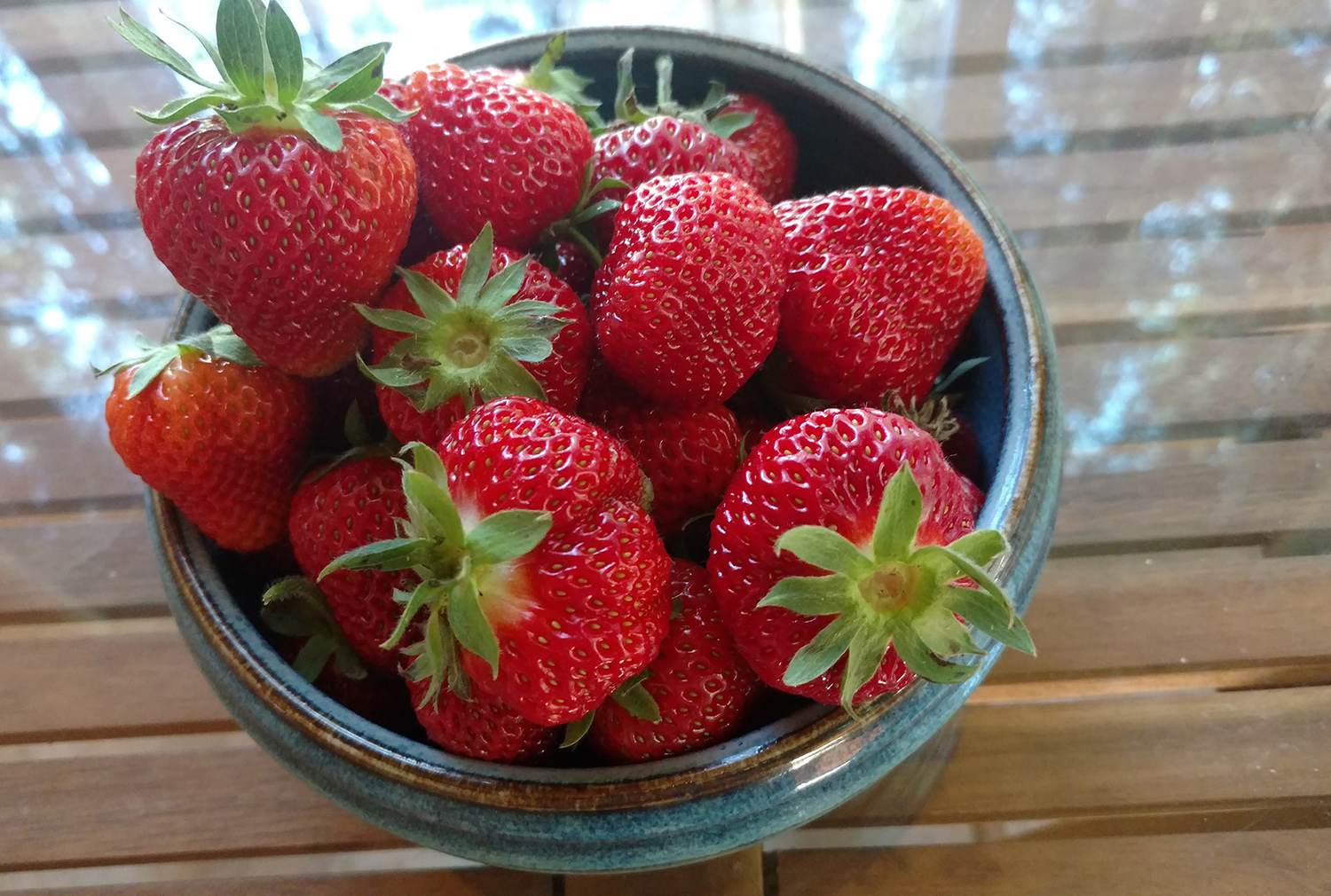Simple Sustainability: How to reduce your foodprint
by Sky Trombly –
“Eat food. Not too much. Mostly plants.”
– Michael Pollan, In Defense of Food: An Eater’s Manifesto.

Most everyone wants to lead lives that have an impact on this planet and not just any impact, but a positive one.
I submit that it is the choices that we make every day and, indeed, at least three times a day that make the most impact relative to any other choice we can make.
Therefore, I’d like to offer some strategies for improving our foodprint, a word that speaks of our environmental impact (commonly referred to as a “footprint”) with regards to our food habits.
#1. Reduce your meat consumption.
I am not saying this to make you go vegan or vegetarian. Reduction in meat can have a tremendous impact on the environment and human health. I recommend not keeping the “reduce” part nebulous or fuzzy. Create some personal rules that work for you and stick with them. Meatless Mondays, a modest decrease, has greater impact than you might think because it allows for consistency.
Other ideas include:
• meatless at home
• meatless during the work week
• portion decreases 6 oz instead of 8 oz
Whatever is easy to remember and implement for your family. Small decreases done consistently are best and you can always decrease further when you’re comfortable. Choose a method that is sustainable for you.
Food for thought:
“’If all the grain currently fed to livestock in the United States were consumed directly by people, the number of people who could be fed would be nearly 800 million,’ reports ecologist David Pimentel of Cornell University’s College of Agriculture and Life Sciences. He adds that the seven billion livestock in the U.S. consume five times as much grain as is consumed directly by the entire U.S. Population.”
– Roddy Scheer and Doug Moss
#2. Avoid single meal foods.
Instead of getting applesauce in small plastic tubs, get a large container and dispense into small Tupperware. Instead of TV or microwavable dinners, pick up ingredients and cook. This can reduce food costs, waste and waistlines. I second guess myself whenever I use an entire bag or box for one meal. Frozen veggies is the main exception.
#3. Pay attention to the material food comes in. Avoid Plastic.
Problems with plastic:
• Plastics are made from toxic chemicals and leach these chemicals into our food.
• They are not biodegradable (my childhood toothbrushes will likely outlast my grandchildren).
• They aren’t very recyclable. Assuming that the plastic is even sent to a recycling center, most plastic numbers (the numbers located in the chasing arrow symbol) are not recyclable at all or are too vague for processing. The numbers that are recyclable can be recycled one or two times before becoming unusable. (Glass and metal, in contrast, can be recycled over and over again.).
When the option is available, choose metal and glass over plastic containers. When you have the option to go package-free (easier in the produce, bakery and bulk sections) go for it! I used to believe that those plastic, produce bags were somehow mandatory. That isn’t true. You can simply go without or bring reusable produce bags (and shopping bags for that matter) from home.
#4. Shop the perimeter of the store.
Real food doesn’t have much of a shelf life. Real food is simpler and has fewer processing costs for the environment. I like Michael Pollan’s description of real food: “The food your great-grandmother would recognize from her childhood.” Go-Gurt is not a food.
#5. Meal plan based on what you already have at home (bring a shopping list).
This:
• produces less food waste,
• saves money,
• is easier to prepare because you likely already have experience with the kinds of food you’ve been buying, have complementary spices and ingredients, and know who will eat the food you buy (in the case of picky-eaters at home).
#6. Join the fun and get dirty too!
Try to grow your own food. There are options for almost everyone: growing sprouts and herbs in your kitchen, gardening with pots on your deck, keeping a backyard garden, or planting in a community garden. Shop from a farmer. The easiest ways to support local farmers are: (1) through a Farmer’s Market or (2) from a CSA (Community Supported Agriculture). Farmer’s Markets works a little like grocery stores in that you can pick up what you want from what’s for sale that day. CSA’s are kind of like a subscription service that you pay for in advance (allowing the farmer to have money to purchase supplies and so on). You usually get a box every week during the farm’s productive season.